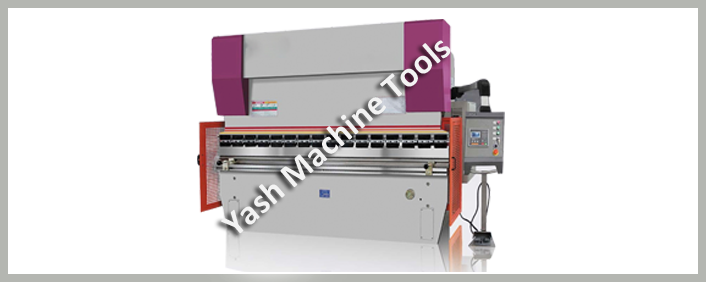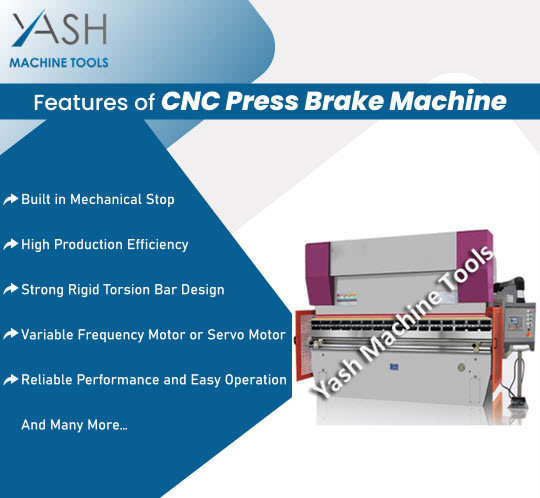Overview of the Mechanical Press Brake and Its Industrial Significance
In the vast realm of industrial machinery, the mechanical press brake stands out as a crucial player, shaping and bending metal with precision and efficiency. Let’s delve into the intricate world of mechanical press brakes, exploring their evolution, components, working mechanism, applications, advantages, challenges, and future trends.
Definition of Mechanical Press Brake
A mechanical press brake is a machine designed to bend sheet metal and plate material. It employs mechanical force to achieve precise bends, making it a cornerstone in various manufacturing processes.
Importance in the Industrial Sector
The industrial sector heavily relies on mechanical press brakes for metal fabrication, offering a cost-effective and efficient solution for bending operations.
Evolution of Mechanical Press Brake Technology
Historical Background
The inception of mechanical press brakes dates back to the early 20th century, with manual operations evolving into powered machines. This historical journey showcases the continuous quest for enhanced efficiency and accuracy.
Technological Advancements
Modern mechanical press brakes have witnessed significant technological advancements, integrating digital control systems, automated features, and enhanced precision.
Components of a Mechanical Press Brake
A. Frame and Bed
The robust frame and bed provide stability and support during the bending process, ensuring accurate and consistent results.
B. Ram and Punch
The dynamic duo of ram and punch applies force to the metal, shaping it according to the desired specifications.
C. Back Gauge
The back gauge aids in positioning the material, contributing to the precision of each bend.
D. Control Systems
Digital control systems have revolutionized mechanical press brakes, allowing for programmable and repeatable bending sequences.

Working Mechanism
A. Bending Process
The bending process involves the controlled application of force, gradually shaping the material to achieve the desired bend angle.
B. Types of Bends
Mechanical press brakes offer versatility in producing various bend types, including V-bends, U-bends, and more complex forms.
C. Precision and Accuracy
The mechanical press brake’s design ensures high precision, meeting tight tolerances in industrial applications.
Applications in Different Industries
A. Metal Fabrication
In metal fabrication, mechanical press brakes play a pivotal role in creating components for diverse industries, such as construction and consumer goods.
B. Automotive Sector
Automakers utilize mechanical press brakes to shape automotive components with precision, contributing to the overall safety and efficiency of vehicles.
C. Aerospace Industry
Precision and reliability make mechanical press brakes indispensable in the aerospace industry, where stringent standards are non-negotiable.
Advantages of Using Mechanical Press Brakes
A. Cost-Effectiveness
Compared to hydraulic counterparts, mechanical press brakes offer cost-effective solutions for small to medium-sized operations.
B. Versatility
The versatility of mechanical press brakes allows for a wide range of applications, making them suitable for diverse manufacturing needs.
C. Efficiency and Speed
With faster cycling times, mechanical press brakes contribute to increased productivity and efficiency on the production floor.

Challenges and Solutions
A. Maintenance Issues
Regular maintenance is crucial to address wear and tear, ensuring the longevity and optimal performance of mechanical press brakes.
B. Safety Concerns
Operators must adhere to strict safety protocols, including proper training and the use of safety features, to mitigate potential risks.
C. Technological Solutions
Advancements in technology have led to safety features and automated systems, addressing challenges and enhancing overall machine performance.
Choosing the Right Mechanical Press Brake
A. Considerations for Selection
Factors such as material type, thickness, and production volume play a vital role in selecting the appropriate mechanical press brake for specific industrial needs.
B. Customization Options
Manufacturers offer customization options to tailor mechanical press brakes to unique requirements, ensuring optimal performance in diverse applications.
Future Trends in Mechanical Press Brake Technology
A. Automation and Robotics
The integration of automation and robotics is poised to elevate the capabilities of mechanical press brakes, streamlining processes and reducing manual intervention.
B. Integration with IoT
The Internet of Things (IoT) is expected to play a significant role in connecting and optimizing mechanical press brakes, enhancing real-time monitoring and predictive maintenance.
Environmental Impact
A. Energy Efficiency
Mechanical press brakes, with their efficient power utilization, contribute to energy conservation and sustainable manufacturing practices.
B. Sustainable Practices
Manufacturers adopting sustainable practices find mechanical press brakes as allies in reducing the environmental impact of industrial processes.
Conclusion
The overview of mechanical press brakes highlights their pivotal role in industrial settings, combining efficiency, versatility, and precision. As technology continues to evolve, the future of mechanical press brakes promises even greater efficiency, automation, and sustainability in manufacturing.
- Maintenance Tips for Vertical CNC Milling Machine in Iran’s Harsh Industrial Environment
- Market Potential for CNC Lathe Machines in South African Countries: Trends & Insights
- How Saudi Arabia’s Manufacturing Industry Rely on All Geared Radial Drilling Machines?
- Why All Geared Lathe Machines are Gaining Popularity in German Industry?
- Top Applications of Horizontal Boring Machines in Australian Manufacturing Industry
- The Growing Demand for All Geared Lathe Machines in Global Markets


